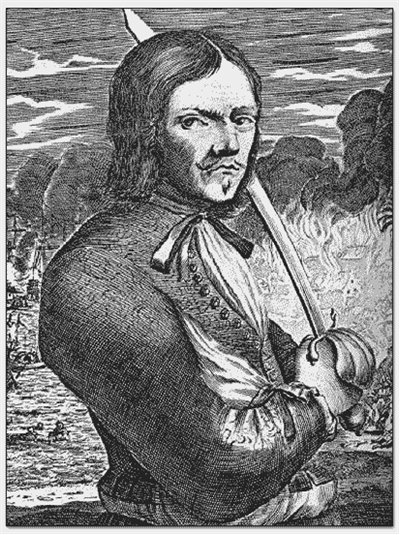Buccaneers And Privateers Were Pirates – But What’s The Difference Between Them?
AncientPages.com - Piracy is widely regarded as the world’s oldest profession. Many of the most well known pirates in historical lore originate from a period known as the Golden Age of Piracy that started in the 1650s and continued to the 1730s.
Some historians have suggested that most plundering and looting took place over just a few short years from around 1716 to 1726. This coincided with the end of the War of the Spanish Succession which meant that fewer European navies occupied the seas in the area and a great many well-trained sailors found themselves out of work as a consequence.
Buccaneers and Privateers were two common pirate types.
Jean-David Nau (c. 1635 – c. 1668), better known as François l'Ollonnais.
The Buccaneers were the semi-lawful sailors and soldiers who got their name from the word ‘buccaneer’ which describes the type of meat these men, mainly Frenchmen, used to sell to passing ships before they turned to a life of piracy in around 1650. The original buccaneers were hunters who lived on the island of Hispaniola in the Caribbean, but when the Spaniards drove them off their island they became pirates.

The painting Capture of the Pirate, Blackbeard, 1718, depicts the capture of one of the famous Buccaneers.
The Buccaneers attacked almost exclusively Spanish coastal towns and ships and they were supported by the English and all other nations at war with Spain. When English occupied Jamaica, providing a base for the buccaneers to launch theirs attack to Spanish settlements, the conflict inflated, as the rise of the Buccaneers.
In the eyes of the Spaniards the Buccaneers were just ordinary brutal criminals, but other nations saw them as heroes.
One of the most famous Buccaneers was Jean-David Nau (c. 1635 – c. 1668), better known as François l'Ollonnais.
He was born in France around 1635. As a young man he was sold to a master who took him to the Caribbean . From 1650 to 1660 he lived as servant on the Island of Martinique. However, L'Ollonais gained experience and confidence for all following achievements in his career. In 1660 he joined the Buccaneers stationed in Saint-Domingue and showed all his talent. Robbing and killing Spaniards was his occupation from that point till the end of his life.
L'Ollonais is said to have been extremely cruel.
See also:
Jolly Roger – Symbol Of Golden Age Piracy
When And What Was The Golden Age Of Piracy?
Why Did Pirates And Sailors Wear Earrings?
More Fascinating Ancient History Facts
The Privateers were more “legal” pirates. They were commissioned by the government of their country or wealthy individuals to attack and raid enemy ships in times of war.
So they were legally authorized to plunder and they carried with them a letter of marque which identified them as ‘legal’ raiders.
One of the most famous privateers was Captain Henry Morgan, who fought for England against Spain in the 1660's and 1670's. With a privateering commission, Morgan sacked several Spanish towns, including Portobello and Panama City. He shared his plunder with England and lived out his days in honor in Port Royal.
Many Privateers often wanted a greater share than specified in their contract and they didn’t aks, they just took what they wanted. So, the line between privateer and outright pirate was often crossed.
It should be added that many Buccaneers considered themselves to be Privateers, with many carrying letters of marque which served as legal proof that they were sponsored by wealthy individuals and not operating as independent pirates.
Copyright © AncientPages.com All rights reserved. This material may not be published, broadcast, rewritten or redistributed in whole or part without the express written permission of AncientPages.com
Expand for referencesMore From Ancient Pages
-
 ‘Wheel Of Giants’: Mysterious Complex Of Circles – Prehistoric ‘Stonehenge’ Monument In The Middle East
Featured Stories | Mar 29, 2019
‘Wheel Of Giants’: Mysterious Complex Of Circles – Prehistoric ‘Stonehenge’ Monument In The Middle East
Featured Stories | Mar 29, 2019 -
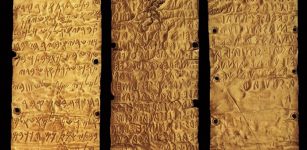 Pyrgi Gold Tablets: A Rare Ancient Bilingual Treasure
Artifacts | Nov 23, 2018
Pyrgi Gold Tablets: A Rare Ancient Bilingual Treasure
Artifacts | Nov 23, 2018 -
 European Bronze Age Treasure Of Villenna Has Artifacts Made Of Meteoric Iron
Archaeology | Feb 12, 2024
European Bronze Age Treasure Of Villenna Has Artifacts Made Of Meteoric Iron
Archaeology | Feb 12, 2024 -
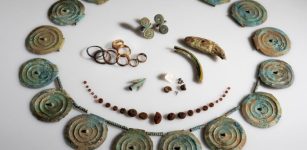 Extraordinary Bronze Age Jewelry Hoard Discovered In A Carrot Field In Switzerland
Archaeology | Oct 18, 2023
Extraordinary Bronze Age Jewelry Hoard Discovered In A Carrot Field In Switzerland
Archaeology | Oct 18, 2023 -
 Secrets Of The Melsonby Hoard – Largest Iron Age Treasure In The UK
Archaeology | Mar 27, 2025
Secrets Of The Melsonby Hoard – Largest Iron Age Treasure In The UK
Archaeology | Mar 27, 2025 -
 Burnt Mound Complex Dated To Bronze Age – Uncovered At Suffolk Site
Archaeology | Jun 19, 2023
Burnt Mound Complex Dated To Bronze Age – Uncovered At Suffolk Site
Archaeology | Jun 19, 2023 -
 Major Discovery Of 15,000-Year-Old Artifacts Could Re-Write History Of Peru
Archaeology | May 26, 2017
Major Discovery Of 15,000-Year-Old Artifacts Could Re-Write History Of Peru
Archaeology | May 26, 2017 -
 Unique Sword Discovered In Mysterious Pre-Viking Tomb In Uppsala, Sweden
Archaeology | Sep 2, 2019
Unique Sword Discovered In Mysterious Pre-Viking Tomb In Uppsala, Sweden
Archaeology | Sep 2, 2019 -
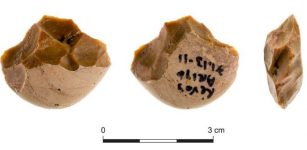 Function Of “Chopping Tools” Found At Prehistoric Site Of Revadim Israel – Studied
Archaeology | Jan 22, 2021
Function Of “Chopping Tools” Found At Prehistoric Site Of Revadim Israel – Studied
Archaeology | Jan 22, 2021 -
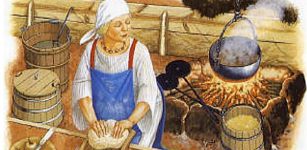 Cooking Gear Found In Graves Of Viking Men And Women
Archaeology | Jun 27, 2019
Cooking Gear Found In Graves Of Viking Men And Women
Archaeology | Jun 27, 2019 -
 Scientists Closer To Solving The Mystery Of When Animals Evolved
Evolution | Jul 6, 2023
Scientists Closer To Solving The Mystery Of When Animals Evolved
Evolution | Jul 6, 2023 -
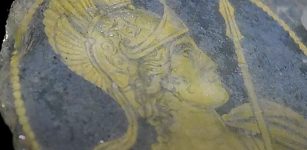 Extremely Rare Ancient Gold Glass With Goddess Roma Found During Subway Works In Rome
Archaeology | Feb 13, 2023
Extremely Rare Ancient Gold Glass With Goddess Roma Found During Subway Works In Rome
Archaeology | Feb 13, 2023 -
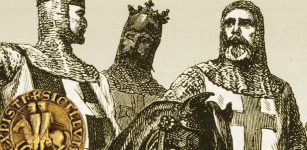 Knights Templar – Among The Most Wealthy And Powerful Of The Western Christian Military Orders
Featured Stories | Jun 11, 2020
Knights Templar – Among The Most Wealthy And Powerful Of The Western Christian Military Orders
Featured Stories | Jun 11, 2020 -
 Researchers Confirm Clovis People Used Great Lakes Camp Annually About 13,000 Years Ago
Archaeology | Sep 12, 2024
Researchers Confirm Clovis People Used Great Lakes Camp Annually About 13,000 Years Ago
Archaeology | Sep 12, 2024 -
 Legendary Mount Penglai Where The Eight Immortals Reside
Chinese Mythology | Feb 20, 2018
Legendary Mount Penglai Where The Eight Immortals Reside
Chinese Mythology | Feb 20, 2018 -
 Ghostly Appearance Of Weird Ancient City Suspended In The Sky Witnessed By Many People
Ancient Mysteries | Jul 9, 2019
Ghostly Appearance Of Weird Ancient City Suspended In The Sky Witnessed By Many People
Ancient Mysteries | Jul 9, 2019 -
 Evidence Of Brain Surgery Performed 3,000 Years Ago Discovered In Tel Megiddo, Israel
Archaeology | Feb 23, 2023
Evidence Of Brain Surgery Performed 3,000 Years Ago Discovered In Tel Megiddo, Israel
Archaeology | Feb 23, 2023 -
 ‘Exceptionally’ Rare Iron Age Axle Found In Suffolk
Archaeology | Jan 26, 2023
‘Exceptionally’ Rare Iron Age Axle Found In Suffolk
Archaeology | Jan 26, 2023 -
 North America’s First Languages Originate From Siberia
Linguistic Discoveries | Apr 10, 2024
North America’s First Languages Originate From Siberia
Linguistic Discoveries | Apr 10, 2024 -
 Knowledge Of Secret Ancient Underground Civilization Revealed By Maya Priests
Ancient Mysteries | Nov 1, 2018
Knowledge Of Secret Ancient Underground Civilization Revealed By Maya Priests
Ancient Mysteries | Nov 1, 2018

